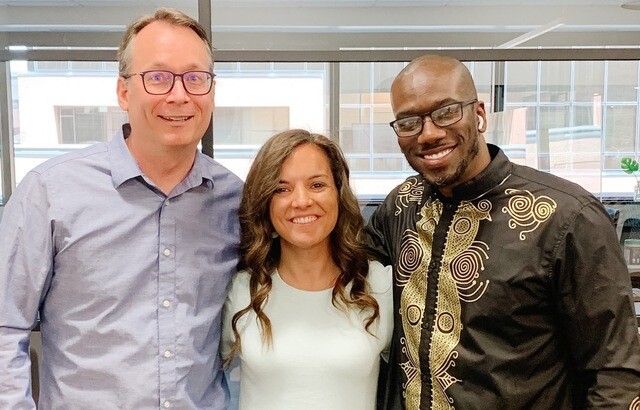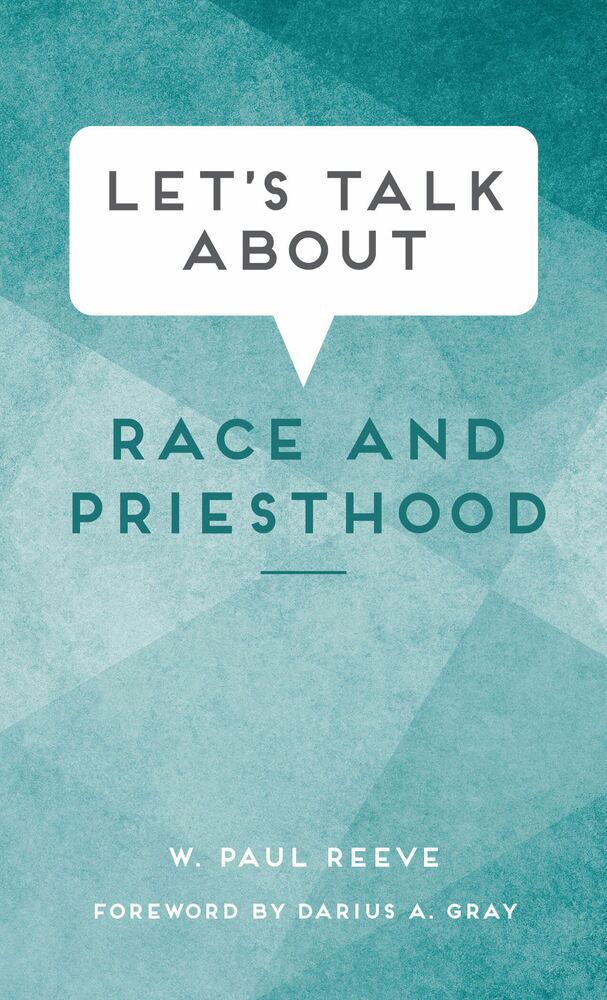Editor’s note: This excerpt was originally published on LDSLiving.com in May 2021.
Mauli Bonner is on a mission—a mission to have a monument built to honor Black Latter-day Saints. It all began with a desire to learn more about his heritage as a Black member of the Church. Thus, he began a journey that many would’ve thought would shake his testimony. But instead, he found his testimony being strengthened. His study led him to learn about Black Latter-day Saints from the early church and to be introduced to a Latter-day Saint slave named Green Flake, one of the first Latter-day Saints to arrive in the Salt Lake Valley on July 22, 1847.
“Green Flake is enslaved to Madison and Agnes Flake and is baptized in 1844 in Mississippi, and the Flakes then move to Nauvoo, and Green Flake's story is the Latter-day Saint story,” Paul Reeve, a professor of Mormon History at the University of Utah, explained as he joined Bonner on the episode. “He then will move to Winter Quarters, we find him listed in a census at Winter Quarters, and I believe it's the Seventh Ward, living next to another enslaved man named John Burton. And Flake will be [one of] three enslaved men who are sent by their enslavers in advance of them to go to the Salt Lake Valley and to prepare homes and to plant crops so that when their enslavers arrive the following year, they will have a home to live in and food to eat.”
Now a movie, His Name is Green Flake, written and directed by Bonner, will serve as a fundraising tool for a monument in honor of Black Latter-day Saints who have been a part of the Church since its beginnings. But why a monument? Why does this matter? Both Bonner and Reeve shared their thoughts on this week’s All In podcast.
Listen to the full episode here or in the player below. You can also read a full transcript here.
The following excerpt has been edited for clarity.
Morgan Jones: Mauli, you mentioned earlier, this desire to create a monument. And I think sometimes we look at something like a monument, and we think, well why does it matter? Why does it matter to have names on a statue or names on a rock? But it does matter. And I think you did such a good job at the screening. You talked about being able to bring your kids somewhere and say to them, you know, “These people were like you and they contributed to The Church of Jesus Christ of Latter-day Saints.” And so, talk to me about—I'd love to get both of your perspectives—on the significance of having representation in the form of a monument or recognition in that form.
Mauli Bonner: Yeah, you know, something that crosses generations and racial [and] cultural lines is scripture. Children, old White lady, young Black boy, everyone in between can read a scripture and draw strength from it, regardless of their background. When we think of Joseph of Egypt, and we think of the Jews of Israel, Shadrach, Meshach, and Abednego, Daniel in the lions’ den—I would venture to say that they weren’t White. But they were all enslaved for a portion of their life just like Green Flake. And we all draw strength from them. We’re doing ourselves a disservice not to acknowledge some that have done the same thing, and so close to where we are today—right here, in our country, in Salt Lake. We’re going to grow so much stronger spiritually when we allow ourselves all of the stories from those who have come before us. And the monument, what that does is there’s representation. It’s difficult when there is not. It's hard to explain to our children if there's nowhere to go and see. It’s hard to know if it’s true. When you do hear things that are hard or a mean person saying a terrible thing, you can at least go here and say, “No, we were there. And we do good things,” or “They were there, and they do good things.”
We need somewhere to acknowledge all of the contributions. Because you know, to be honest, it's difficult for me to explain to my children, just in Church, you know, that—“No, there are Brown angels. Let's go home and we're going to draw some Brown angels for you,” and “Daddy can be an angel, absolutely.” We need representation. Because sometimes the words aren't enough.
And, my goodness, the leaders in our Church have said so many brilliant, inspired things. And I just want to be able to support their words with somewhere to see that they acknowledge our history, all of it. All of it. This is the restored gospel of Jesus Christ, and it is true. And in its truthfulness, we cannot send people from our Church, outside of our Church to find more truth. They should be getting it here, right here. And I think healing is what we’re craving. Oh, my goodness, I know I am. You know, 2020 gave us all a good licking, right? And we want some healing. We want somewhere to say, we’re moving forward together, not past, but forward together, and acknowledging the past that came before us. And we’re saying to our generations that follow, “This is how we are moving forward.” As we learned, this is what we're going to do. This is our time to do it. And if we don't do it, I pray that our children will.
Morgan Jones: Thank you Mauli. Paul?
Paul Reeve: Well, I think monuments are important. They represent a physical manifestation of public memory. And they acknowledge, in a physical way, in a very material way, the racial past that we're talking about. So, no longer do we have to feel like Black Latter-day Saints have been erased from collective Latter-day Saint memory, but actually having a physical monument provides a place where we are collectively remembering them, and the public can share in that and make meaning of it for themselves. So that's why I think monuments are important.
My experience as a Latter-day Saint is that we tend to not talk about Black Latter-day Saints before June 1978. Because A) we might not even know that they existed, or B) we're uncomfortable acknowledging our own racism. And a monument like this is a way to acknowledge and remember them. The database that I run at the University of Utah, we're committed to identifying every known Black Latter-day Saint baptized into the faith between 1830 and 1930. We have 103 biographies loaded to the database [and] currently another 200 under research. By the time we're done, we’ll be somewhere between 300 and 400 Black Latter-day Saints in the first 100 years of the faith. Their story is the Latter-day Saint story. The Latter-day Saint story is not complete unless all people are included. The body of Christ is not complete unless all members are included. And a monument is a way of acknowledging that. A physical way of acknowledging their story and including them in the Latter-day Saint story.
Learn more about His Name is Green Flake here.


